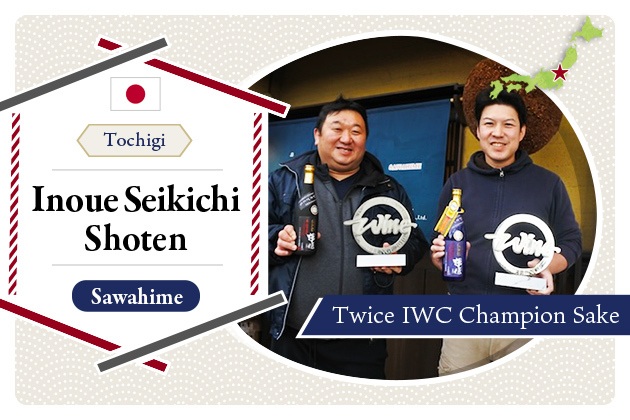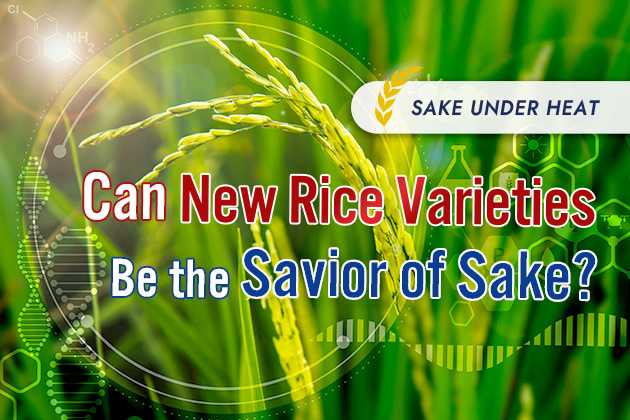
2023.11
15
Is Junmai Superior? Let's Properly Understand “Brewer's Alcohol" in Sake.
The Honjozo, Ginjo, and Daiginjo categories contain a small amount of a spirit called brewer's alcohol (jozo alcohol). Why bother adding spirits to sake?
Even among regular sake drinkers, there are some who avoid aruten (sake made with jozo alocohol), believing that brewer's alcohol is bad for their health and they should only drink junmai.
What is brewer's alcohol anyway, what role does it play in sake brewing, and are those categories more harmful to the body than junmai? We would like to thoroughly explain brewer’s alcohol and its history in sake production.
What is brewer's alcohol?
What exactly is brewer's alcohol? According to the "Sake Manufacturing Process Quality Labeling Standards," Brewer's Alcohol is defined as "alcohol fermented and distilled from starchy or carbohydrate-containing materials."
To put it more simply, brewer's alcohol is a distilled spirit made from molasses made from sugar cane or other raw materials, and is similar in manufacturing process to rum or shochu. Although rarely appreciated, the manufacturing process is completely different from that of synthetic alcohols used for industrial purposes.
Brewer's alcohol has an alcohol content of 95% at the time of production. However, after receiving the product, it is diluted to about 60% when stored in a brewery. The reason is that a high alcohol concentration of 95% constitutes a "hazardous substance" under the Fire Service Law.
Such brewer's alcohol is produced by general liquor manufacturers such as Daiichi Alcohol (Kirin Holdings), Takara Shuzo (Takara Holdings), and Godo Shusei (Oenon Holdings), as well as by sake breweries such as Meiri Shuzo and Ippongi.
How to add brewer’s alcohol: concentration and timing
As mentioned above, brewer's alcohol has an alcohol content of 95% when refined and is diluted to about 60% when it arrives at the brewery and is stored. When it is finally added, it is further diluted to about 30% alcohol by volume.
Basically, the timing for adding alcohol is just before pressing, the last stage of moromi fermentation mash. This is related to the definition of “nihonshu (Japanese sake)" under the Alcoholic Beverage Tax Law. Under the law, sake is only recognized as “nihonshu" if alcohol is added before pressing, and if alcohol is added after pressing, it becomes a liqueur.
Role of brewer's alcohol
Currently, there are three main reasons for adding brewer's alcohol to sake:
1. To prevent spoilage and improve preservation
2. To enhance the aroma
3. To improve the crispness of sake
In other words, sake brewers add brewer's alcohol in order to achieve their ideal sake.
However, the role of brewer’s alcohol has changed throughout the history of sake brewing. The following is a brief history of the process.
History of brewer’s alcohol
It was surprisingly long ago that distilled alcohol was added to sake. The method of adding spirits was already introduced in Domo Shuzoki, a book of sake brewing secrets written in the early Edo period (1603-1868).
–Take some shochu and add about 10 percent of it to the moromi mash five to three days before pressing. This gives the sake a more refined flavor and makes it last longer. (Nihon Nosho Zenshu #51, Nosan Kako #2, Domo Shuzoki-Kanmoto tsukuri yo gokui den, Gen Yoshida, Nobunkyo [Rural Culture Association]. 1996)
As this quote indicates, shochu, made from moromi mash or sake kasu (lees), was added at that time, rather than brewer's alcohol as it is today. It was known that this would improve the taste and crispness of the sake, and also enhance its durability. This method of adding shochu is called “hashira (pillar) shochu."
Later, around the time of World War II, a completely different type of added alcohol appeared. This method, in which twice as much brewer's alcohol is added as is normally produced in the sake brewing process to produce three times the final amount of sake, was called sanzoshu (triple increase sake).
Sanzoshu was born out of the rice and sake shortages of the interwar period. However, after the war, it was produced simply to reduce the cost of sake production. There were quite a few poor quality sakes among these sanzoshu producers.
The above process has led us to the modern way of adding alcohol, as mentioned above.
In addition to improving preservation and adjusting taste during the Edo period, the purpose of brewer's alcohol today is meant to amplify the gorgeous aroma of ginjo sake. This effect of brewer’s alcohol was newly created with the development of ginjo production techniques.
The fruity and beautiful aroma of ginjo sake (ginjo-ka) is not soluble in water, but is easily soluble in alcohol. Therefore, by adding brewer’s alcohol to the moromi mash just before the end of fermentation, it is possible to incorporate more of the ginjo-ka aroma.
The value of adding alcohol with modern techniques is also evident in the results of the Annual Japan Sake Awards. While the prize-winning rate for sake with brewer’s alcohol is over 50%, the prize-winning rate for junmai sake was around 10% until the 2018 sake brewing year. Although the prize-winning rate for junmai sake has increased to more than 30% since the start of the 2021 sake brewing season (2019 BY), the characteristics of sake with brewer’s alcohol, which combines a gorgeous aroma and sharpness as a ginjo-shu, are still highly valued.
Currently, regulations are also in place regarding the amount of alcohol added. In 1976, when the Alcohol Tax Law was revised, a limit of 280 liters of alcohol (100% alcohol equivalent) per ton of white rice was set for each production site. In 1990, the same law was amended to add a limit of 10% or less of the amount of white rice used in the production of sake with the specific name (honjozo, ginjo, and daiginjo), which is equivalent to 95% alcohol by volume.
Then, in 2006, sanzoshu could no longer be made. This is because the Alcohol Tax Law has been revised so that sanzoshu is no longer considered sake. Specifically, the total weight of additives, including other secondary ingredients such as sugar, is now limited to 50% or less of the amount of white rice used. In reality, such a large number of secondary ingredients are not used, but this regulation helps to maintain the quality of sake.
Is brewer's alcohol unhealthy?
As mentioned at the beginning of this article, there are people who avoid sake with brewer’s alcohol believing that it is harmful to one's health. This perception is thought to have come from the old days of sanzoshu. Some of the sanzoshu produced for the sole purpose of reducing costs may indeed have been low-quality sake that caused intoxication. This negative impression has also been promoted through the media.
Today, however, brewer's alcohol is not often used to increase the amount of product. In the case of tokutei meisho shu (premium category of sake), such as daiginjo, ginjo, and honjozo, brewer's alcohol is not used to increase the volume, but rather to improve the aroma and taste of the sake, as explained above.
Actually, brewer's alcohol is ethanol, the same alcohol produced in the fermentation of rice. For example, it is also used in RTDs. Today, quality inspections are strictly enforced, and it is safe to assume that the addition of brewer's alcohol alone will not result in sake that is harmful to the body.
Incidentally, while sake is being imported to various countries these days, laws differ from country to country, and in some cases the category and tax rate for sake with brewer's alcohol added may vary.
Brewer’s alcohol and categories
Tokutei meisho-shu, to which brewer's alcohol is added, includes daiginjo, ginjo, tokubetsu honjozo-shu, and honjozo. The definitions of each are as follows:
| Category | Brewing Method | Rice Polishing Ratio |
|---|---|---|
| Daiginjo | Ginjo zukuri method | Up to 50% |
| Ginjo | Ginjo zukuri method | Up to 60% |
| Tokubetsu Honjozo | - | Up to 60% or using special method |
| Honjozo | - | Up to 70% |
*The amount of brewer’s alcohol that can be used in either case is up to 10% of the weight of the rice
*Ginjo zukuri method: To ferment slowly at low temperatures and brew to have a unique and gorgeous ginjo aroma.
Other sake of tokutei meisho-shu, i.e., sake containing the keyword "junmai," is sake to which no brewer's alcohol has been added.
Sake that is not classified as tokutei meisho-shu is generally called futsu-shu (non-premium sake).
Summary
Just as junmai sake has its qualities, sake with brewer's alcohol added has its own unique appeal. Its image of poor quality liquor does not apply today. There are a number of excellent sakes with brewer’s alcohol, and their appeal is diverse. The time has come for people to enjoy the taste of various types of sake.
Take this opportunity to discover a variety of sake with brewer’s alcohol.
*Translation support: Sake Brewers Association of North America
References (All in Japanese):
・What are additives not required to be labeled for sake? - Learn about ingredients and materials other than rice, koji, and water, SAKE Street (Japanese Ver.)
・Sake manufacturing process quality labeling standards, National Tax Agency
・Nihon Nosho Zenshu #51, Nosan Kako #2, Domo Shuzoki-Kanmoto tsukuri yo gokui den, Gen Yoshida, Nobunkyo [Rural Culture Association]. 1996
・Sake manufacturing technology: New edition, Brewing Society of Japan. 2009
Pickup Articles
2019.01.18
2019.01.25
Trending Articles
Popular Articles
Recent Articles













